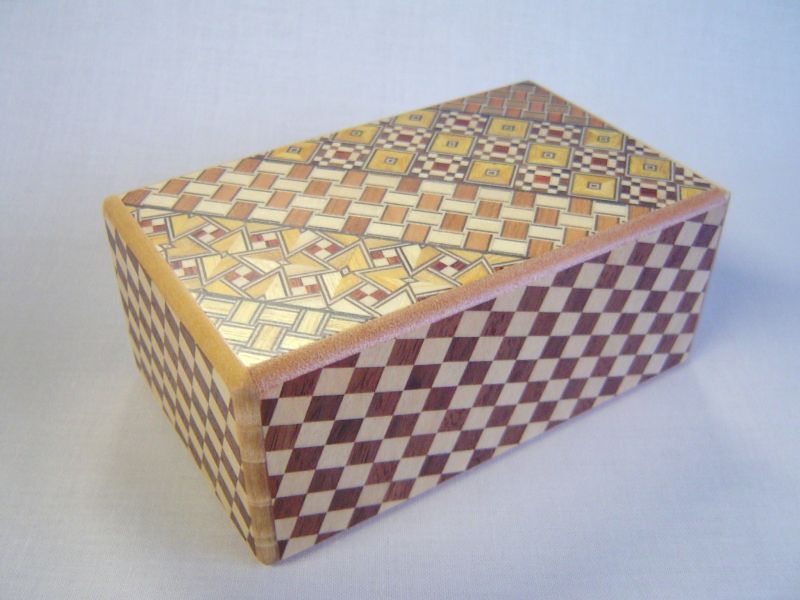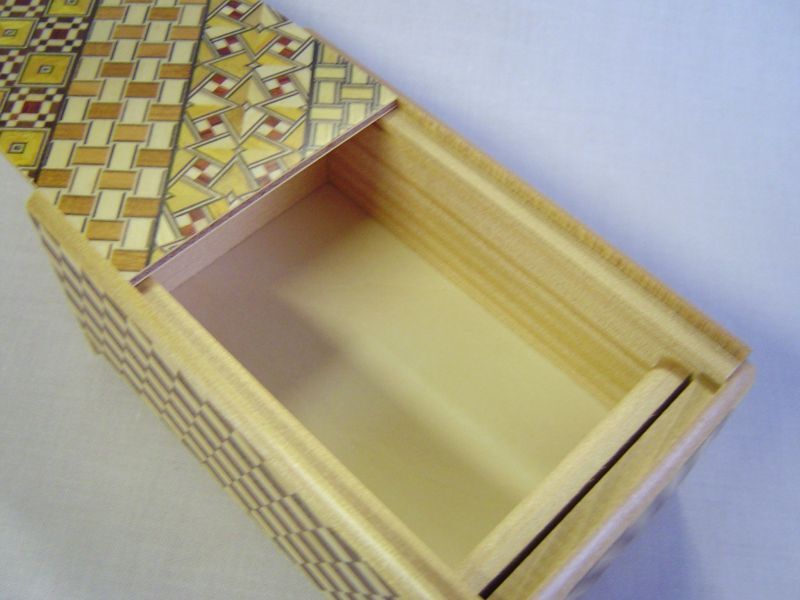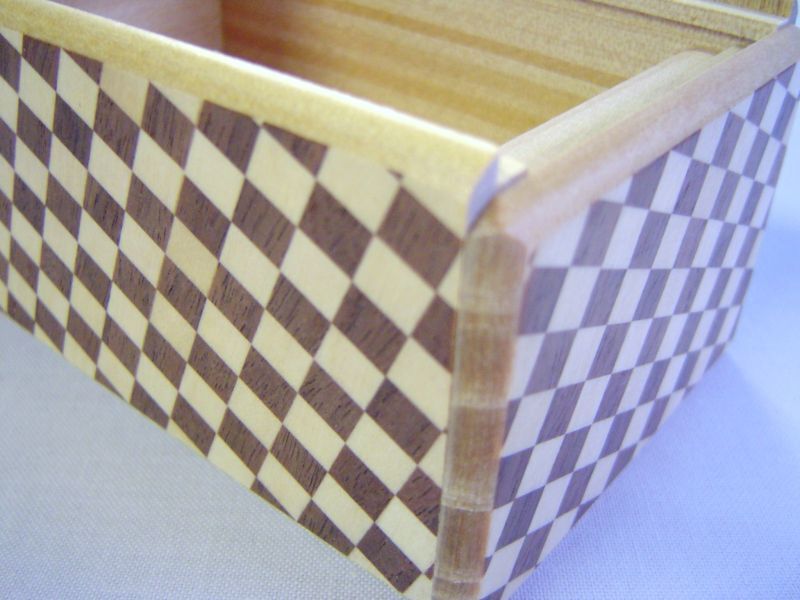Hit box
This is one of my past works: The Hit box 5 steps Yosegi/Ichimatsu Japanese Puzzle Box in 2010. It is about 4 sun (length) and slightly narrow (width). At first glance, it looks like a normal 4 steps puzzle box, but you can't find the first step. That's right, to make the first move, you have to lightly "hit" the box. You don't need to hit it too hard. Hold the box in one hand and lightly hit it against the palm of your other hand. When you do this, a sliding panel hidden inside the box (actually, the bottom part of the box) moves. By moving this sliding panel, you can make the first move. In reality, this hidden panel is the first move, and the visible panel on the surface of box that you move next is the second move... 😅 So, this box has a 5 steps mechanism.
Why doesn't the first hidden panel move until you hit it? You can probably guess, right? That's right, the panels are stuck with "magnets". The first hidden panel fits into a groove in the next panel and is held in place by magnets. Without the magnets, the hidden panel would gradually move on its own. On the other hand, if the hidden panel was too tight, it wouldn't move at all. So, I made the hidden panels quite loose (they move easily and loosely) and attached each panel with magnets.
However, magnets are not set on both panels. One has a strong magnet, and the other has an iron screw. Two magnets would be difficult to separate even if you hit them. However, the iron screw and the magnet are firmly stuck but can be separated by hitting them. I had a hard time adjusting the strength of the connection.
The design of this box features Ko-yosegi and Ichimatsu yosegi (checkered pattern). The Ichimatsu pattern is made of Walnut wood from North America and Mizuki wood from Japan. It's a unique mechanism, so I would like to make it again. I hope you enjoy it.
Why doesn't the first hidden panel move until you hit it? You can probably guess, right? That's right, the panels are stuck with "magnets". The first hidden panel fits into a groove in the next panel and is held in place by magnets. Without the magnets, the hidden panel would gradually move on its own. On the other hand, if the hidden panel was too tight, it wouldn't move at all. So, I made the hidden panels quite loose (they move easily and loosely) and attached each panel with magnets.
However, magnets are not set on both panels. One has a strong magnet, and the other has an iron screw. Two magnets would be difficult to separate even if you hit them. However, the iron screw and the magnet are firmly stuck but can be separated by hitting them. I had a hard time adjusting the strength of the connection.
The design of this box features Ko-yosegi and Ichimatsu yosegi (checkered pattern). The Ichimatsu pattern is made of Walnut wood from North America and Mizuki wood from Japan. It's a unique mechanism, so I would like to make it again. I hope you enjoy it.


